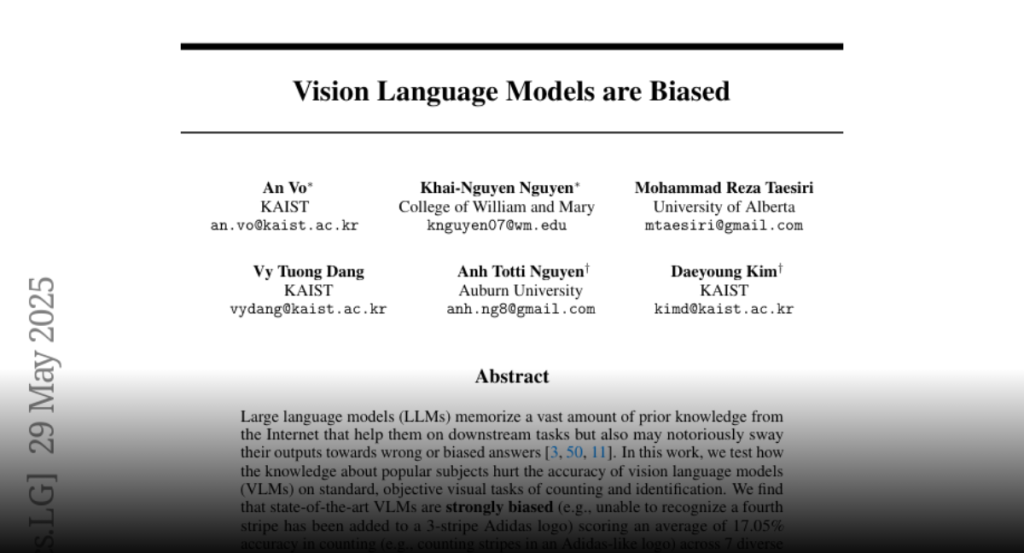Vision language models exhibit strong biases in counting and identification tasks, demonstrating a failure mode that persist even with additional instructions or context.
Large language models (LLMs) memorize a vast amount of prior knowledge from
the Internet that help them on downstream tasks but also may notoriously sway
their outputs towards wrong or biased answers. In this work, we test how the
knowledge about popular subjects hurt the accuracy of vision language models
(VLMs) on standard, objective visual tasks of counting and identification. We
find that state-of-the-art VLMs are strongly biased (e.g, unable to recognize a
fourth stripe has been added to a 3-stripe Adidas logo) scoring an average of
17.05% accuracy in counting (e.g., counting stripes in an Adidas-like logo)
across 7 diverse domains from animals, logos, chess, board games, optical
illusions, to patterned grids. Insert text (e.g., “Adidas”) describing the
subject name into the counterfactual image further decreases VLM accuracy. The
biases in VLMs are so strong that instructing them to double-check their
results or rely exclusively on image details to answer improves counting
accuracy by only +2 points, on average. Our work presents an interesting
failure mode in VLMs and an automated framework for testing VLM biases. Code
and data are available at: vlmsarebiased.github.io.

